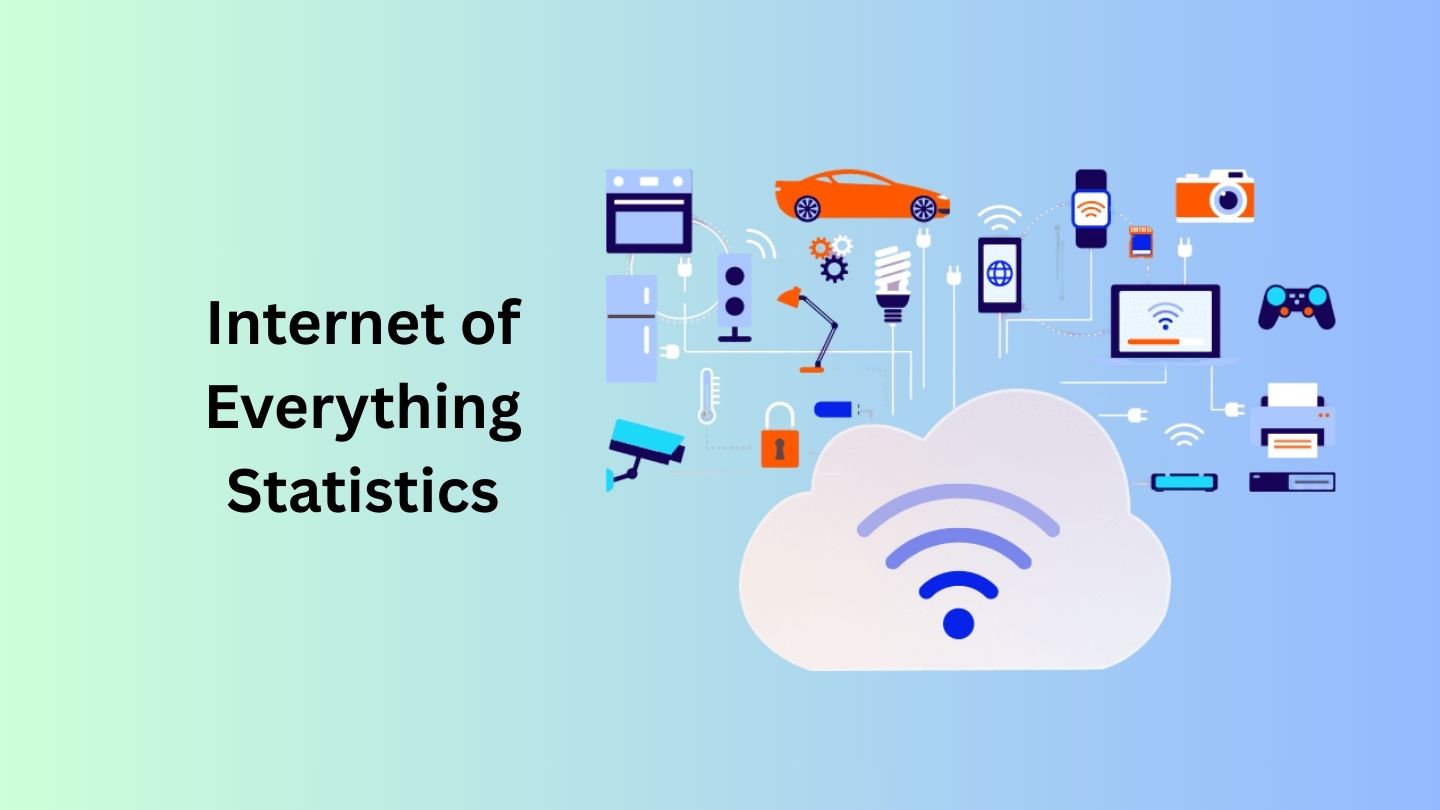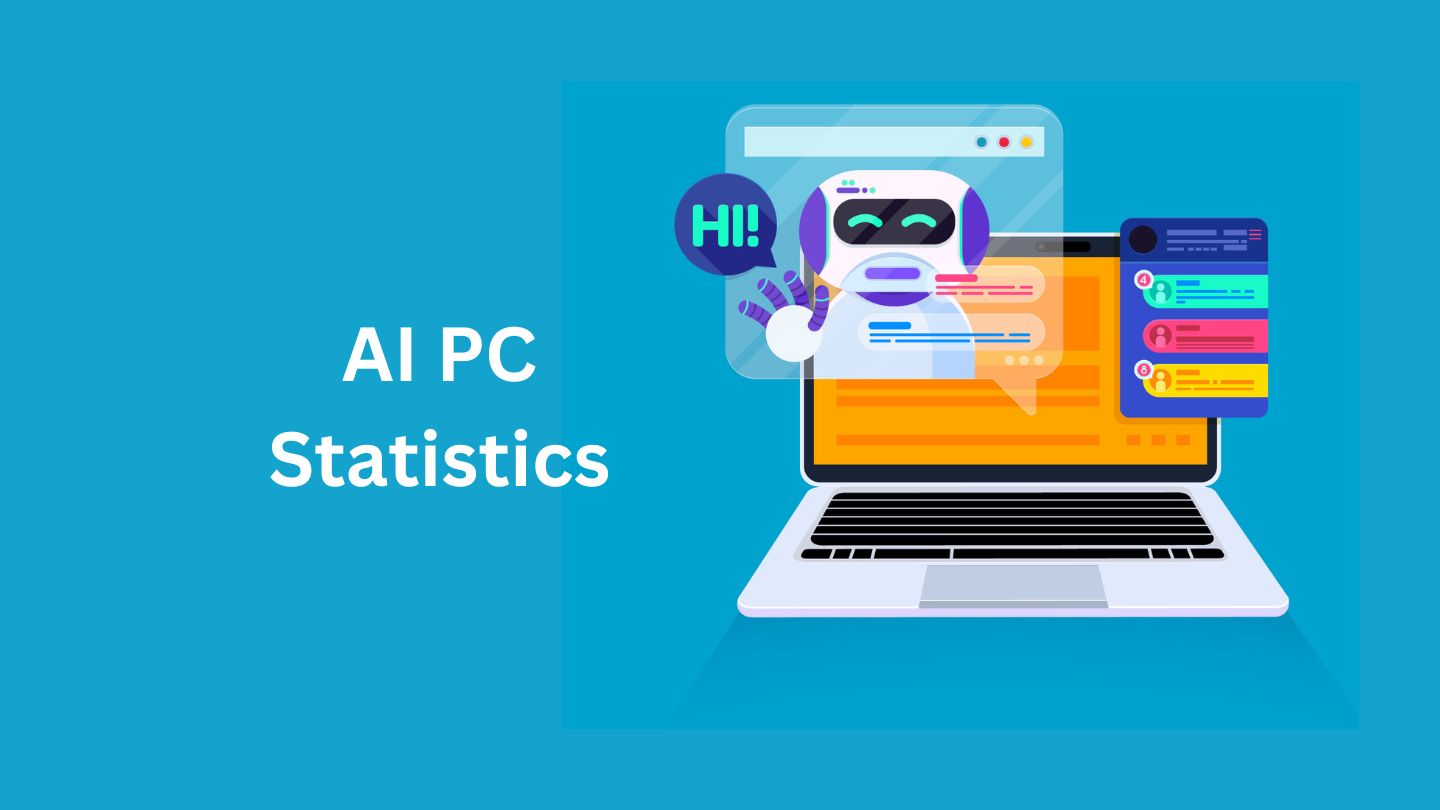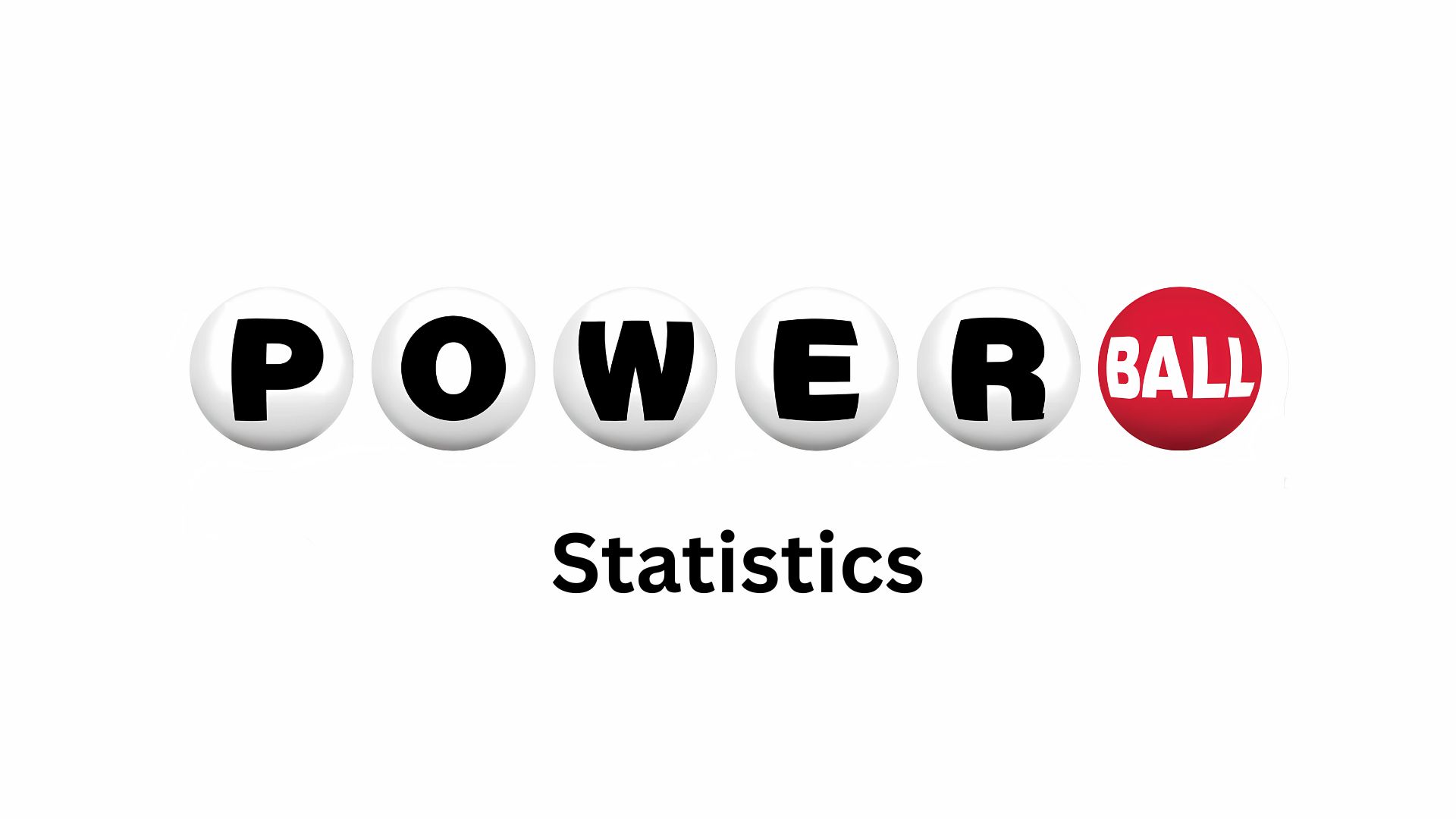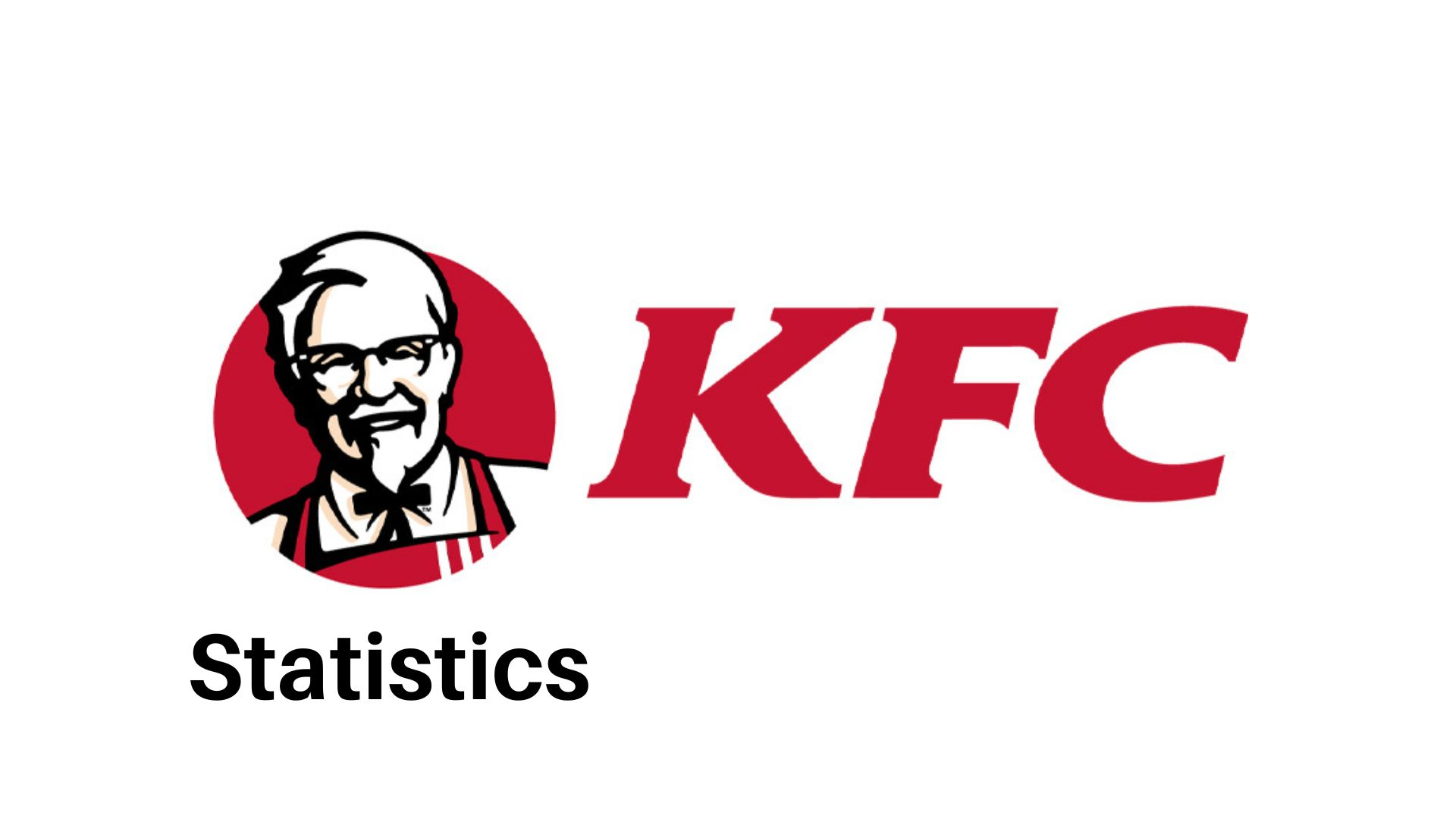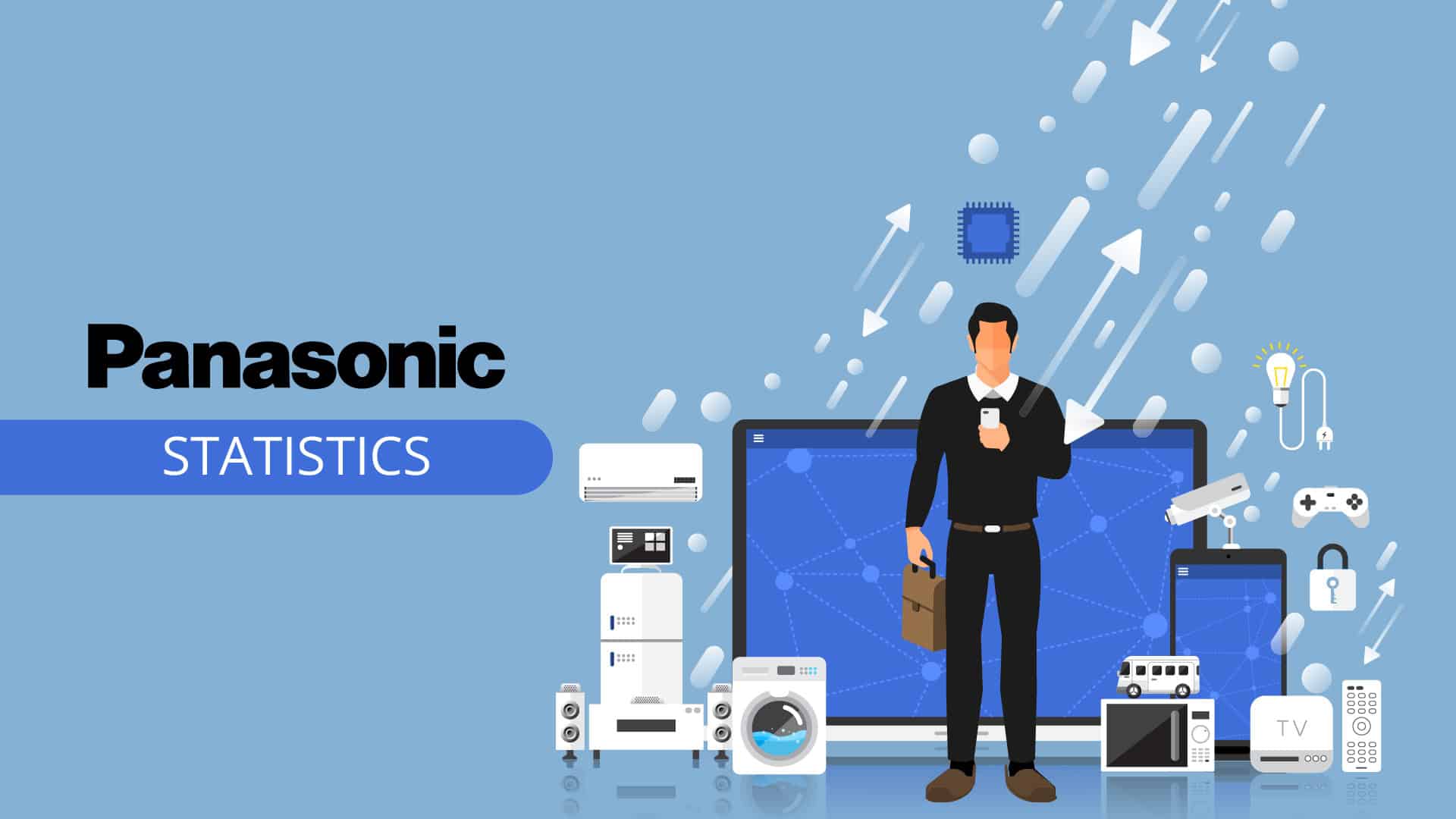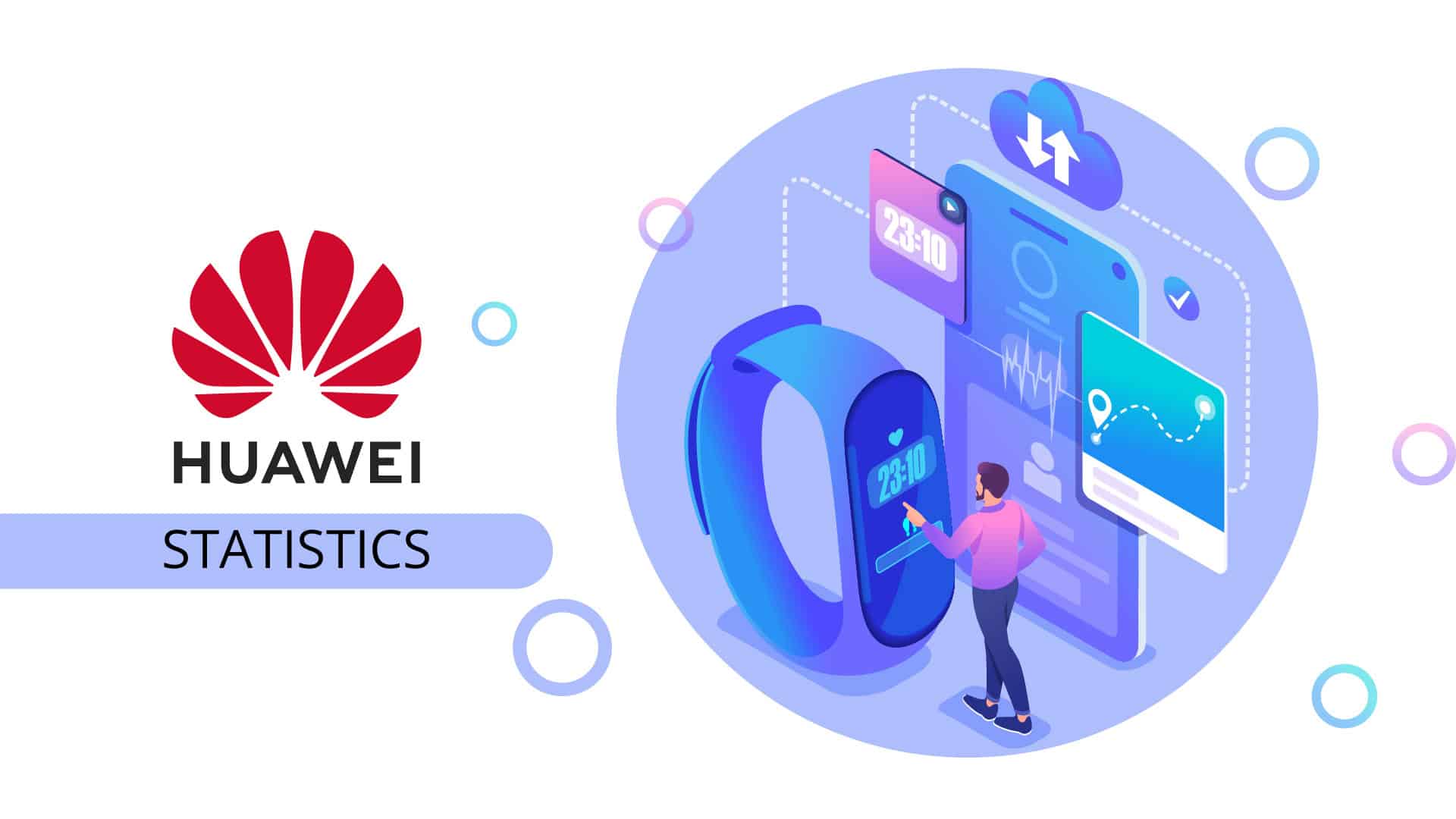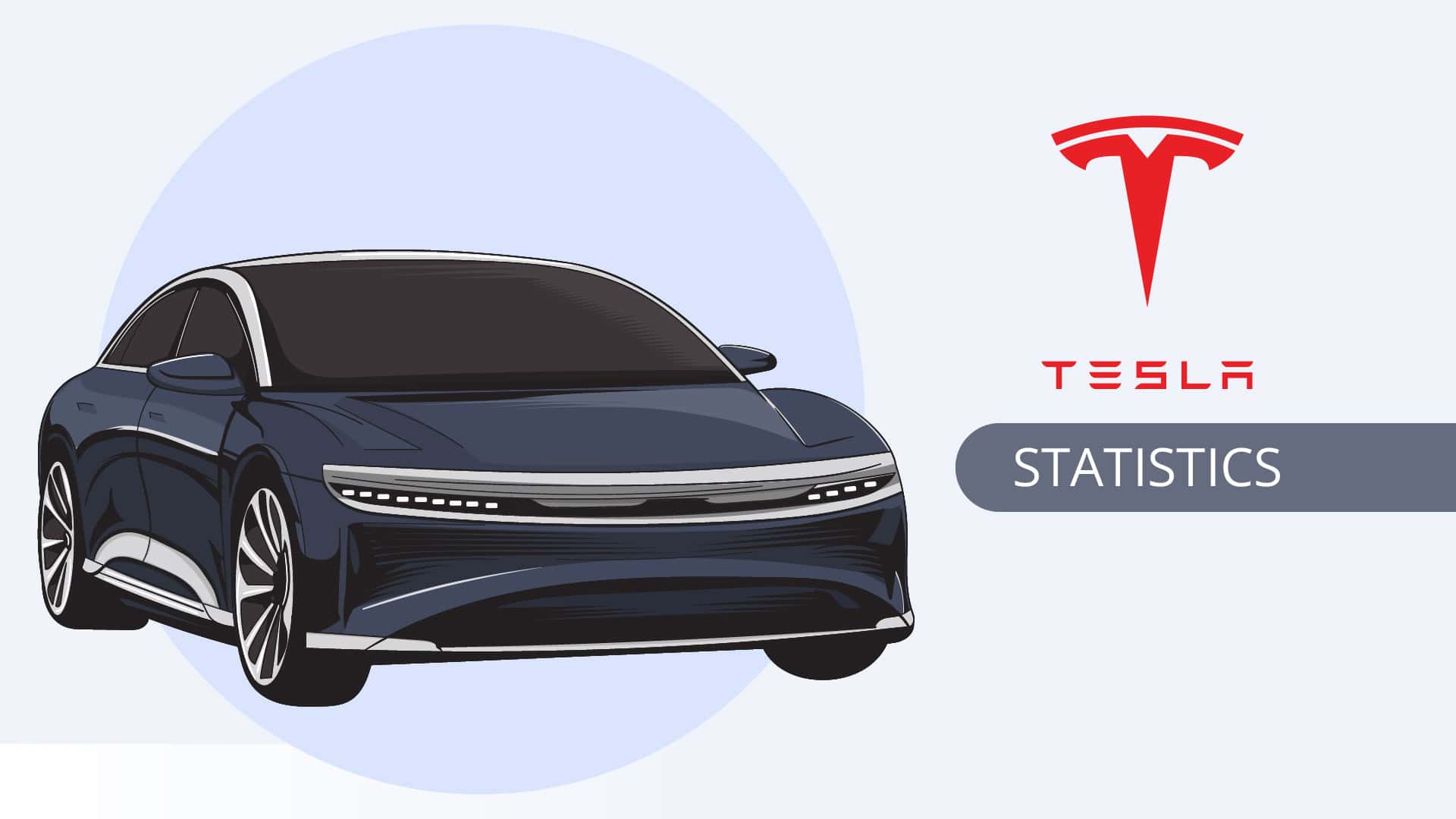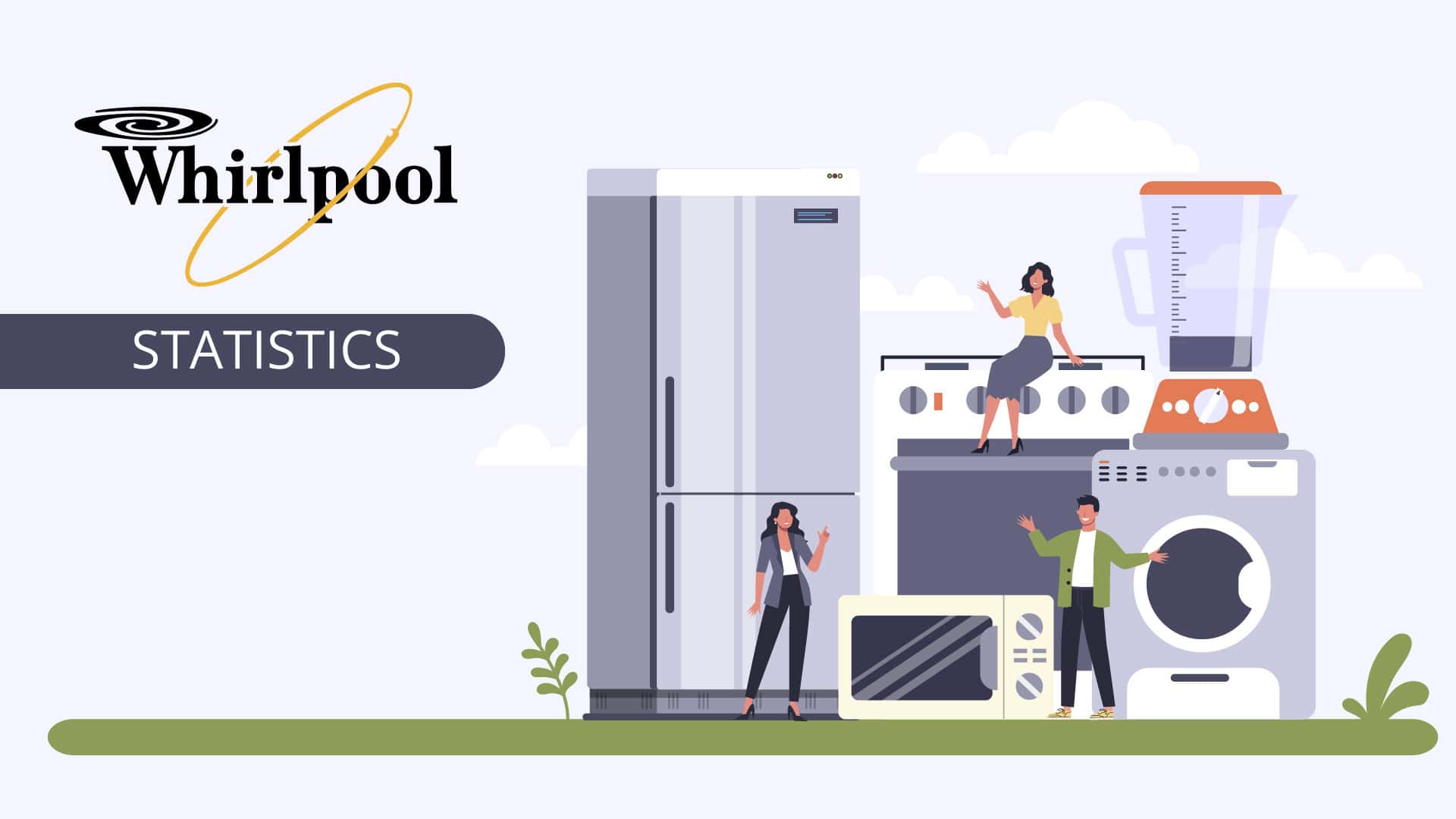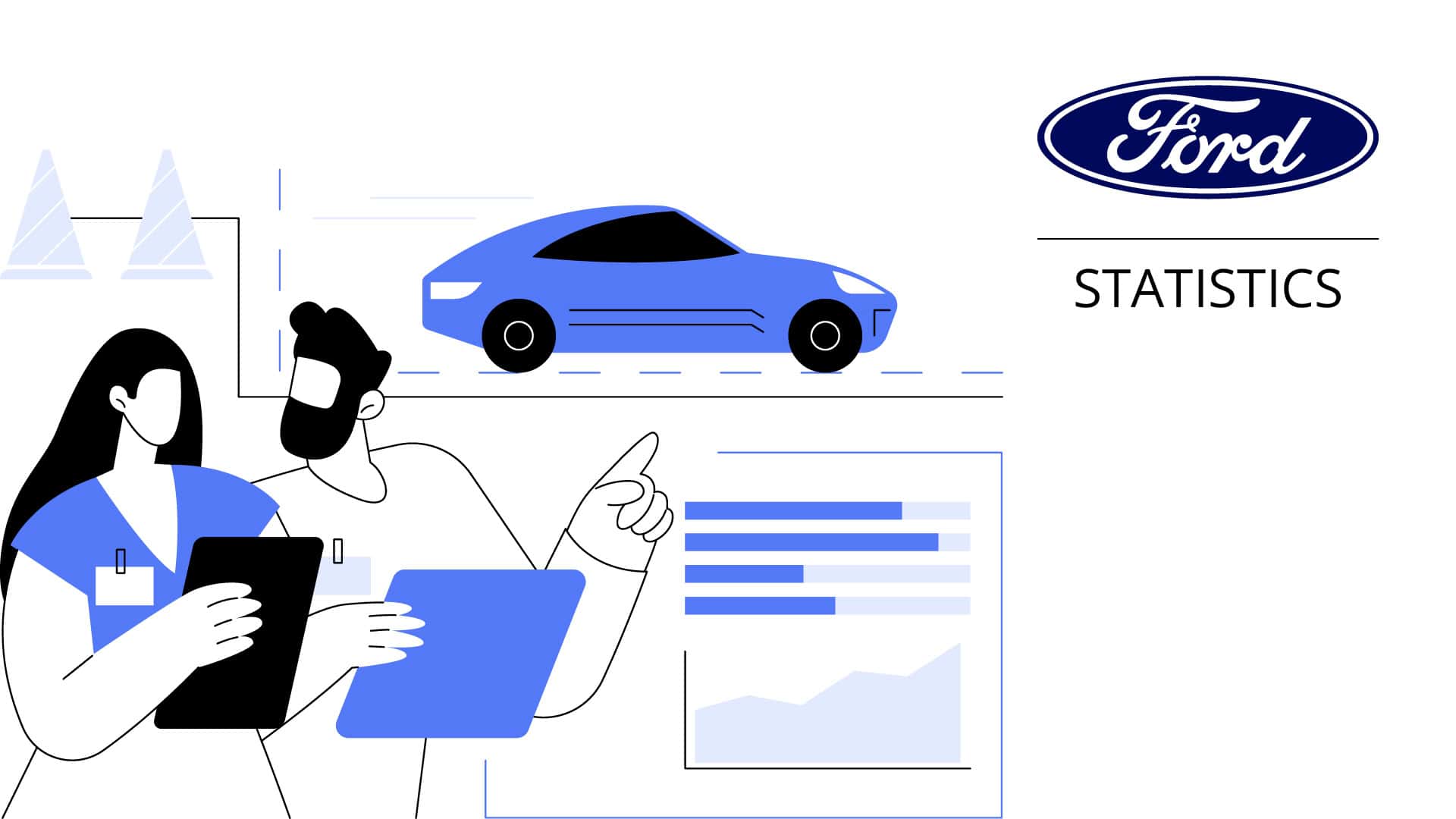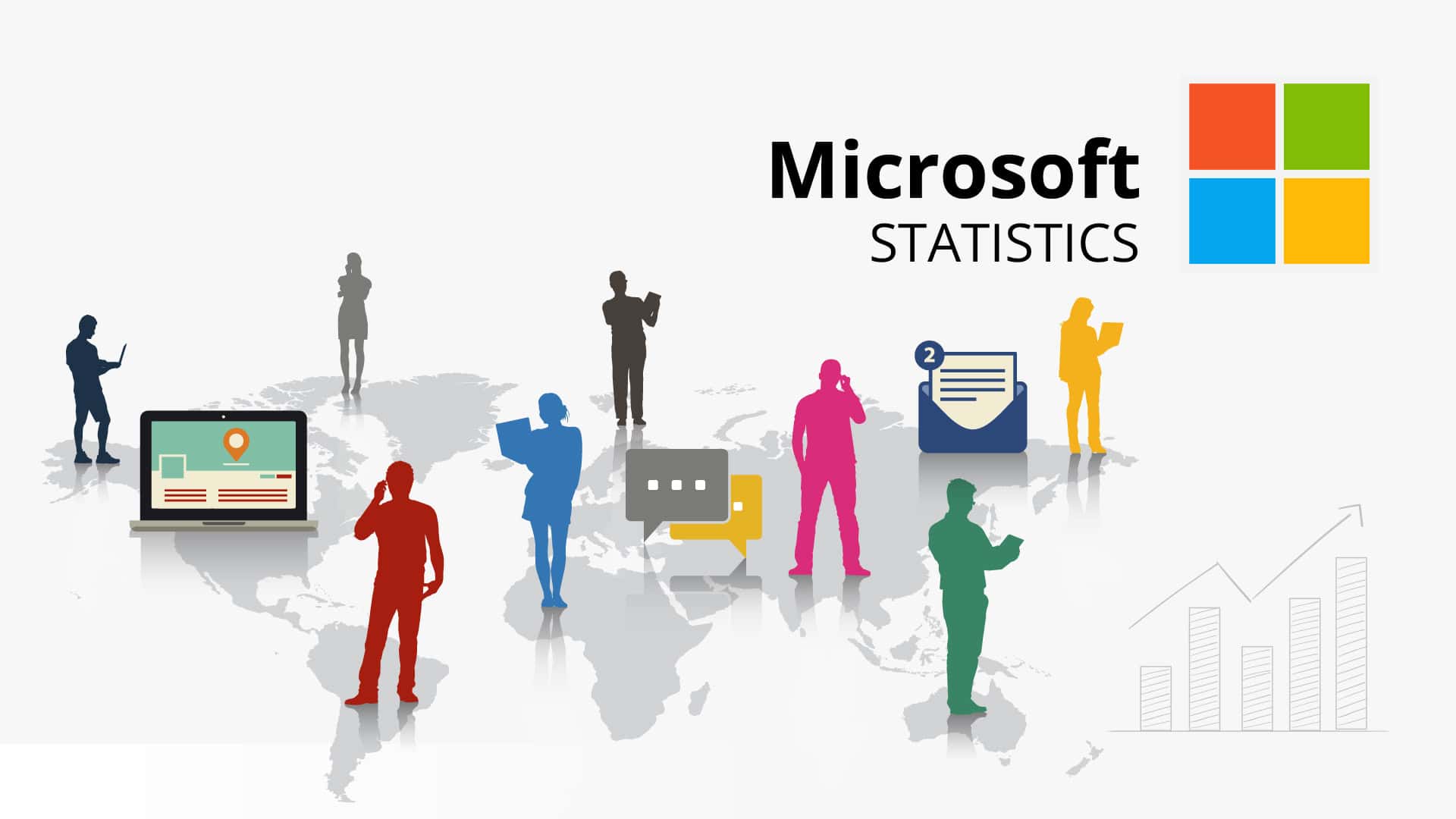Internet of Everything Statistics and Facts (2025)

Updated · Apr 23, 2025


TABLE OF CONTENTS
- Introduction
- Editor’s Choice
- General Internet Of Everything Statistics
- The Four Pillars of IOE
- Internet of Everything Market Statistics by Regional Analyses, 2025
- By Major Players
- Age Distribution of Internet Users
- Use Cases of the Internet of Everything (IOE) Statistics in the Healthcare Sector
- Sustainable Initiatives in the Internet of Everything (IOE)
- Conclusion
Introduction
Internet of Everything Statistics: The Internet of Everything (IOE) connects people, data, devices, and processes through the Internet. It is more than just smart devices; it encompasses how these devices communicate with each other and facilitate better decision-making. From smart homes and cities to healthcare and industry, IOE is changing the way we live and work.
As technology grows, more things are getting connected every day. This generates vast amounts of data and opens up new ways to utilize it. In this article, we will examine key statistics that illustrate the rapid growth of IOE, its driving factors, and the implications for the future. Understanding these numbers can help us appreciate the power and importance of IOE.
Editor’s Choice
- Internet of Everything Statistics show that the global IOE market size is expected to reach USD 1.6 billion in 2025, with projections of USD 6.5 billion by 2035, growing at a rate of 13.5% annually.
- Connected IOT devices are forecasted to be 18.8 billion by the end of 2024, a 13% increase from the previous year.
- The IOT market revenue is anticipated to surpass USD 1.06 trillion globally by 2025.
- The industrial IOT market is projected to reach USD 110.6 billion in 2025.
- Approximately 60% of IOT breaches are due to outdated software and unpatched firmware.
- Internet of Everything Statistics further states that by 2025, there will be an average of 4 IOT devices per person globally.
- In 2025, hardware accounted for approximately 38.2% of the IOE market, as more people were using smartphones and 3G and 4G networks were experiencing rapid expansion.
- During the same time, the Asia Pacific region led the global IOE market, holding a strong 35% share.
- According to Exploding Topics’ March 2023 report, which utilizes data from Finance Online, the number of IOE devices is projected to increase rapidly from approximately 7 billion today to nearly 25 billion by 2030.
- The IOT in the energy market is expected to reach USD 75.03 billion by 2032, driven by smart grids and real-time monitoring.
General Internet Of Everything Statistics
- The Internet of Everything (IOE) market is experiencing rapid growth and is projected to reach USD 2.7 trillion by 2028.
- Experts believe it could grow by approximately 16.4% annually until then.
- More than 100 smart city projects have commenced worldwide, with approximately 80% utilizing IOE technology to enhance urban life.
- Around 70% of hospitals now use IOE to support things like online doctor visits and remote check-ups, improving patient care.
- In factories, IOE has cut machine downtime by 30%, helping production run faster and more smoothly.
- Governments are also getting involved, with approximately 60% utilizing IOE to enhance public services and city systems.
- Although IOE generates a significant amount of useful information, 60% of that data remains unused.
- In cities, IOE helps make roads, transport, and services smarter. In farms, it helps grow more food while using less water and fertilizer.
- However, many people still do not fully understand IOE; approximately 53% have not heard of it, and 72% feel unsure or confused about its meaning.
- Some of the top companies leading the IOE market include Cisco, IBM, Google, Samsung, and Apple.
The Four Pillars of IOE
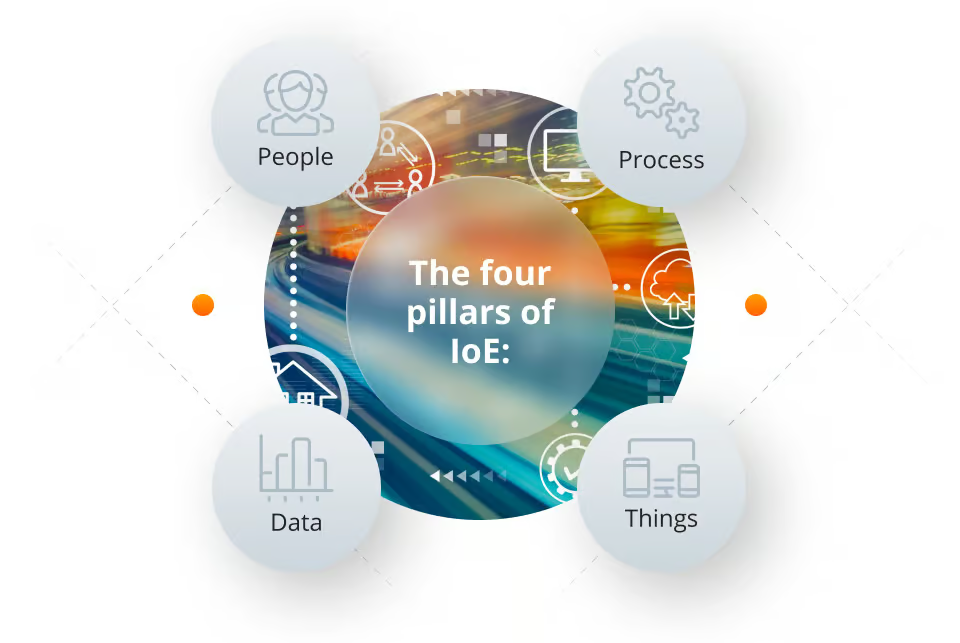 (Source: future processing.com)
(Source: future processing.com)
- People are those who utilize connected devices to share ideas, work more efficiently, and enhance their everyday lives.
- Process refers to the steps or methods used to complete tasks and make decisions smoothly and effectively.
- Data refers to the information collected by connected devices, which is analyzed to help people make informed decisions.
- Things are the devices, machines, and sensors that link together to send and receive data.
Internet of Everything Market Statistics by Regional Analyses, 2025
| Region | Estimated Market Size (USD) |
| North America |
905.5 billion |
|
Asia-Pacific |
490.7 billion |
| Europe |
390.4 billion |
|
Latin America |
150.2 billion |
| Middle East & Africa |
120.3 billion |
By Major Players
- The major players in the global Internet of Everything (IOE) market in 2025 will be dominated by Cisco Systems Inc., which holds the largest share, estimated to be between 12% and 17%, due to its strong IOT infrastructure and network solutions.
- Meanwhile, Internet of Everything Statistics also show that Microsoft Corporation commands 10% to 15%, leveraging Azure IOT and cloud integration.
- Furthermore, the estimated market shares of other companies’ IOE are as follows: IBM Corporation (8-12%), Google Inc. (7-11%), and Oracle Corporation (5-10%).
- Other Companies (combined) accounted for 45% to 58%, reflecting a fragmented market with diverse players.
Age Distribution of Internet Users
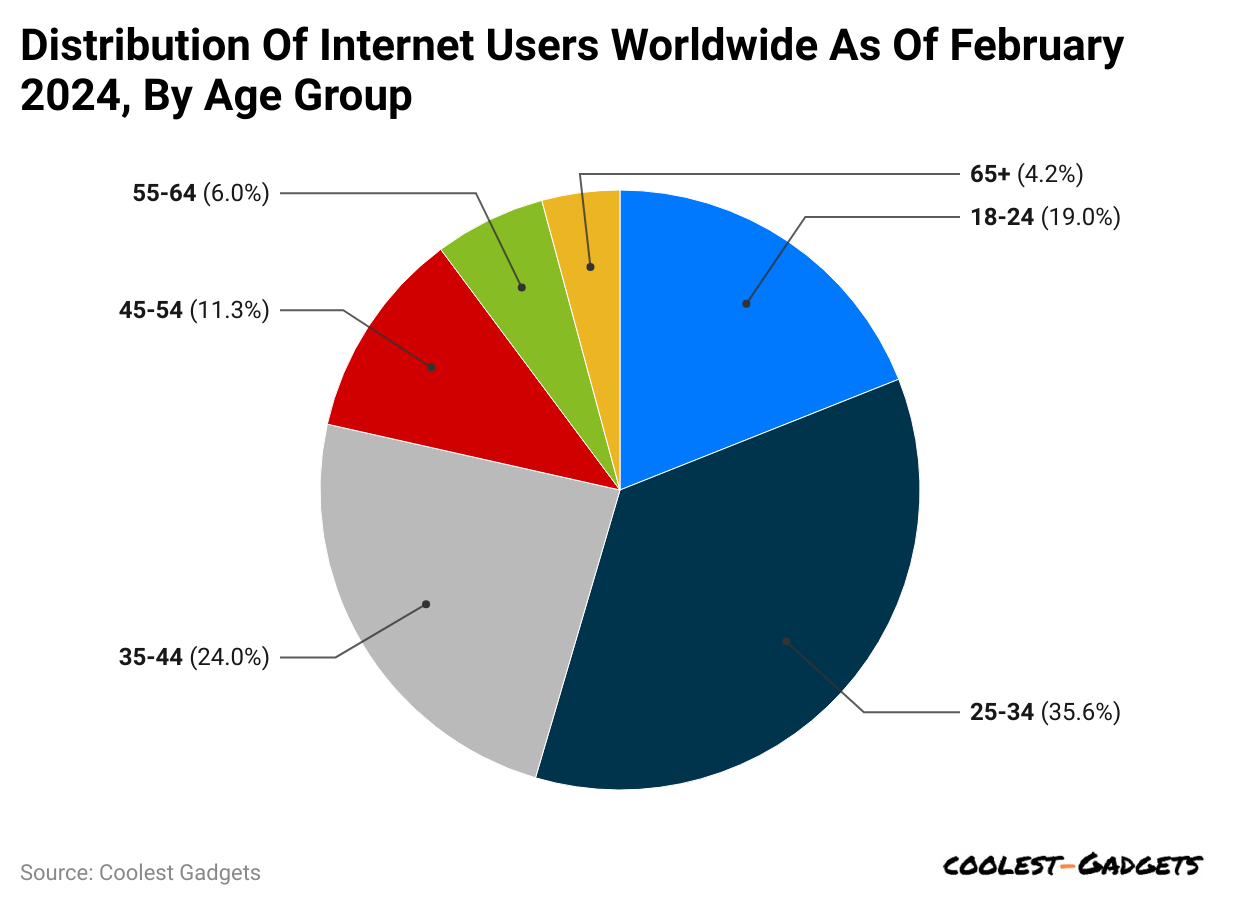 (Reference: statista.com)
(Reference: statista.com)
- As of February 2024, People aged 25 to 34 years made up the largest group of internet users worldwide, accounting for 35.6% of all users.
- Internet of Everything Statistics also stated that around 24% of online users were between 35 and 44 years old.
- Furthermore, the shares of other internet users by age groups are represented as 19% (18 to 24 years), 11.3% (45 to 54 years), and 6% (55 to 64 years).
- Only about 4.2% of global internet users were aged 65 or older.
Use Cases of the Internet of Everything (IOE) Statistics in the Healthcare Sector
- The global Healthcare Iot market is projected to reach USD 93.28 billion by 2025, with a compound annual growth rate (CAGR) of 12.5% from 2025 to 2029.
- Approximately 53% of U.S. hospitals are utilizing Remote Patient (RPM) systems to enhance patient care and reduce hospital readmissions.
- Internet of Everything Statistics: The IOT Healthcare Services market is expected to reach USD 534.3 billion by 2025.
- The number of smart medical devices is anticipated to exceed 7.4 million by 2026, averaging over 3,850 devices per hospital.
- By 2025, 90% of hospitals are projected to implement AI technologies for early diagnosis and remote monitoring.
- The Medical Internet of Things (MIoT) market is forecasted to grow from USD 93 billion in 2025 to USD 134 billion by 2029.
- The global market for Iot-enabled medical devices is expected to reach USD 392.2 billion by 2030, with a CAGR of 26.2%.
In Smart Cities
- The global IOT in Smart Cities market is projected to grow from $130.6 billion in 2021 to USD 312.2 billion by 2026, at a CAGR of 19.0%.
- Over 500 cities are expected to implement digital twin technologies by 2025,
- Urban drivers spend approximately 17 hours annually searching for parking spots.
- Cities utilizing Iot-based waste collection systems have achieved up to 30% reductions in operational costs by optimizing collection routes.
- Smart street lighting systems have enabled cities to reduce energy consumption by up to 50%, promoting sustainability.
In Retail
- Internet of Everything Statistics show that the global Iot retail market size is estimated to reach USD 35.5 billion by 2025, driven by advancements in Iot and Edge technologies.
- Approximately 67% of retail decision-makers have already implemented an IOT strategy, with an additional 26% planning to adopt one by the end of the year.
About 77% of retailers acknowledge that IOT has significantly enhanced the customer experience. - 89% of early adopters in retail have gained increased insights into customer preferences and behaviours through IOT implementations.
In Smart Homes
- Global Smart Home Market: Valued at USD 149.43 billion in 2025, projected to reach USD 633.2 billion by 2032, growing at a CAGR of 22.9%.
- Active Smart Homes Worldwide: Expected to reach 478.2 million by 2025.
- The average revenue per smart home was approximately USD 381.90 globally.
- Internet of Everything statistics indicate that approximately 45% of internet households own at least one smart home device.
- In the U.S., the average smart home price is USD 1,224,763, nearly double that of a non-smart home at USD 663,847.
- Over 25% of Americans are willing to pay an average of USD 18,056 more for a smart home.
- Smart Speaker Adoption: Installed in 79% of smart homes.
- The number of connected IOT devices is expected to exceed 27 billion by 2025.
In Industrial processes
- The global Industrial Iot market was valued at USD 194.4 billion in 2024 and is projected to reach USD 286.3 billion by 2029, growing at an annual rate of 8.1%.
- Industrial IOT Devices: Expected to reach 152 million units by 2025.
- India becomes the fastest-growing industrial IOT market with a CAGR of over 29% from 2024 to 2030.
- Companies like Avalign Technologies improved overall equipment effectiveness from 30% to 80%, reduced machine idle time from 980 hours to 2 hours, and generated over USD 4.5 million in increased production throughput.
Sustainable Initiatives in the Internet of Everything (IOE)
- Iot technology could help lower global greenhouse gas emissions by up to 15% by 2030.
- General Electric reported that using IOE has reduced maintenance costs by 25%, decreased unexpected downtime by 5%, and decreased false outage reports by 75%.
- In transportation, remote monitoring with Iot has helped save 15-20% of fuel by reducing unnecessary trips by technicians.
- Smart streetlights powered by Iot can use up to 40% less electricity.
- Iot-based energy systems have saved a significant amount of power—some even saw a 61.51% drop in energy use through improved device control and scheduling.
- Internet of Everything Statistics show that almost 10.5 million metric tons of CO₂ emissions have been avoided through Iot efforts.
- Approximately 102.1 million gigajoules of waste heat have been recovered, equivalent to the total energy consumption of all participating companies.
- Nearly 19% of companies now spend USD 500,000 or more annually on carbon tracking and sustainability reports.
Conclusion
The Internet of Everything (IOE) connects people, data, devices, and processes to make life easier and smarter. It facilitates better communication, faster decision-making, and enhanced services in areas such as healthcare, education, and urban development. As technology grows, IOE will change how we live and work every day.
However, it also requires robust security and privacy measures to safeguard users. Overall, IOE is creating a more connected and efficient world, with great potential for the future.
Sources
FAQ.
IOE connects people, data, processes, and things, while IOT only connects physical devices to the internet.
IOE is utilised in smart homes, healthcare, and factories to connect devices and exchange data for enhanced control.
The Internet of Everything (IOE) enables people, things, and data to connect more effectively. It makes life easier by improving communication, saving time, and helping devices work smarter together.
The challenges of IOE include high costs, data privacy issues, complex systems, and the need for a strong internet connection, making it difficult for everyone to use and manage easily.
Yes, IOE is safe to use if you follow proper guidelines and download it from trusted sources.
Students, researchers, and engineers use IOE the most to study, design, and improve smart, connected devices and systems.
IOE might change some jobs, but it will also create new ones that need human skills and smart thinking.

Pramod Pawar brings over a decade of SEO expertise to his role as the co-founder of 11Press and Prudour Market Research firm. A B.E. IT graduate from Shivaji University, Pramod has honed his skills in analyzing and writing about statistics pertinent to technology and science. His deep understanding of digital strategies enhances the impactful insights he provides through his work. Outside of his professional endeavors, Pramod enjoys playing cricket and delving into books across various genres, enriching his knowledge and staying inspired. His diverse experiences and interests fuel his innovative approach to statistical research and content creation.


